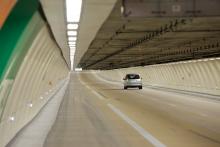EuroTest, an international association of 18 European automobile clubs spearheaded by German automobile club ADAC, could not give any station the top rating of very good.
Lack of help for the disabled, unclean sanitary facilities, high prices in shops and petrol price displays not visible on motorways: these are all areas where Europe's motorway filling stations need to do more, says a report from the organisation.
EuroTest, an international association of 18 European automobile clubs spearheaded by German automobile club
Carrying out a filling station survey for the first time, the EuroTest experts inspected 77 motorway filling stations along the most important European travel routes using a checklist. Around 80 items were tested and listed in categories: points of entry and exit, filling areas, shops, sanitary facilities, hygiene, and prices.
“Lack of help for the disabled, unclean sanitary facilities, high prices in shops and petrol price displays not visible on motorways: these are all areas where Europe’s motorway filling stations need to do more”, said Jacob Bangsgaard, director general of the
The lowest result went to the Dutch De Buunderkamp facility on the A 12 (Utrecht Arnheim), while the Kozlov‐Černá Studánka station on the A 1 (Prague–Brünn) in the Czech Republic came out tops. The top five ratings went to eastern European countries, two in the Czech Republic, two in Slovenia and one in Croatia.
EuroTest rated the stations on a scale from very poor to very good: 23 were good, 48 acceptable and six poor, although none were very poor.
The biggest shortcoming was said to concern hygiene, found to be lacking in most stations visited. Half of the toilets inspected were more or less dirty to look at.
Among survey dating back to 2002 are tunnels, pedestrian crossings, truck parking, motor service areas and road signs.






